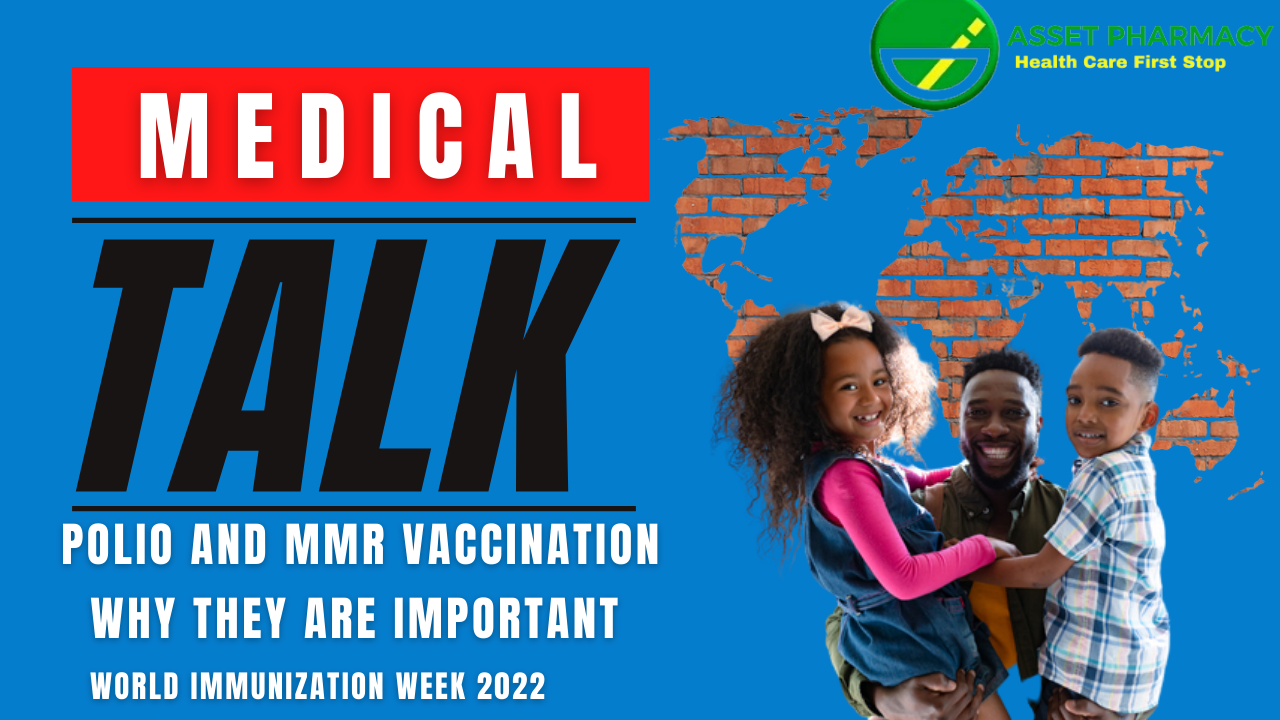
The Importance of Polio and MMR Vaccinations
The Importance of Polio and MMR Vaccines
Polio is a viral infection that was once widespread globally including Nigeria. However due to effective vaccination programs it has become less prevalent today than before. Unfortunately some countries still face challenges with accessibility of this lifesaving medication leading them unable to control poliovirus transmission effectively yet. Henceforth ensuring full immunization against Poliomyelitis remains crucial for both adults and children alike as there exists no cure available currently.
Symptoms of polio
While most individuals who contract polio won’t experience any symptoms or even realize they were infected some may encounter a flu like illness within three to twenty one days after infection. Symptomatic cases could include:
If you’re experiencing a temperature of 38C (100.4F) or higher its important to seek medical attention immediately as this could indicate an underlying health issue that requires treatment. Don’t ignore symptoms like fever – take action now!
* a sore throat
* a headache
* abdominal pain
* muscle pain
* feeling unwell
Polio virus attacks on the nerves in spine and base of brain can lead to paralysis that develops over hours or days. This usually affects leg movement only but may cause long term problems for some individuals who experience difficulty regaining mobility quickly after contracting this disease. However, breathing muscle damage could prove fatal if left untreated promptly by medical professionals. Therefore seeking immediate care is crucial when experiencing any symptoms associated with poliomyelitis.
Long-term Effects of Polio
Although polio typically passes quickly without causing any other issues it can sometimes result in persistent or lifelong complications. A small number of individuals who contract the virus will experience some degree of permanent paralysis while others may require ongoing treatment and support for their symptoms which could include:
* muscle weakness
Muscle atrophy is a condition that causes shrinkage of the muscles. This can lead to significant health problems and should be addressed promptly by medical professionals.
* contractures (tight joints)
Several deformities may affect the feet or legs causing twisted structures. These abnormalities can be a cause for concern and require medical attention to prevent further complications.
For those who have previously experienced polio there is a possibility that they may encounter similar symptoms or an exacerbation of existing ones years later. This phenomenon is known as post-polio syndrome and requires attention from medical professionals for effective management.
Polio vaccination
The polio vaccination is an essential component of routine childhood immunization programs. Children receive this protection through a series of five injections administered at specific intervals throughout their early years:
* At eight weeks old infants are given the first dose as part of the six-in-one vaccine along with other important immunizations like tetanus and diphtheria. booster shots follow up later on when they reach three years four months (four-in-one) or around age thirteen (three-in-one). These additional doses help ensure that children remain protected against poliovirus for longer periods into adulthood. It’s crucial to keep track of these appointments so your little one stays healthy!
If you’re planning on traveling to a country affected by polio its important that you get vaccinated or receive a booster dose if necessary. This is especially true for those who haven’t received the full course of immunization beforehand or whose last shot was administered over ten years ago. Don’t take any chances when it comes to your health – make sure you’re protected against this serious disease!
MMR Vaccine
The MMR vaccine is a reliable and efficient combined vaccination. Its safety record speaks for itself making it an excellent choice when considering immunization options.
The health benefits of this product are noteworthy as it provides protection against three significant illnesses.
* measles
mumps
Rubella – German Measles
Unvaccinated individuals are at high risk of contracting these highly contagious conditions which can easily spread among them.
Its crucial to get vaccinated as these conditions can result in significant complications such as meningitis, hearing loss and pregnancy related issues. Don’t take any chances – protect yourself today!
The MMR vaccine is most effective when administered in two doses. This provides optimal protection against measles, mumps and rubella.
MMR Vaccine Schedule:
MMR Vaccine Schedule For Children
For older children and adults, the MMR vaccine is recommended.
If you haven’t received two doses of the MMR vaccine yet, it is highly recommended that you schedule an appointment with your doctor for a vaccination. This will help ensure optimal protection against measles mumps and rubella infections. Don’t delay – take action today!
It is crucial to confirm that you’ve received both doses if:
Are you about to embark on the exciting journey of college or university?
* are going to travel overseas
* are planning a pregnancy
As a frontline health or social care worker you play an essential role in providing support and assistance to those who need it most. Your dedication is commendable, keep up the good work!
Those who were born between 1970 and 1979 may have only received a measles vaccine. This could leave you vulnerable to the disease if exposed. Take action now by getting fully immunized against this contagious illness. Don’t wait until its too late!
Those born between 1980 and 1990 should take note that they may not be protected against mumps. It is important to consider this information when assessing your overall health status. Seek medical advice if necessary.
For additional information and guidance, please consult with one of our knowledgeable pharmacists. They’ll be happy to help!
